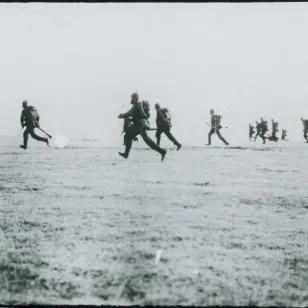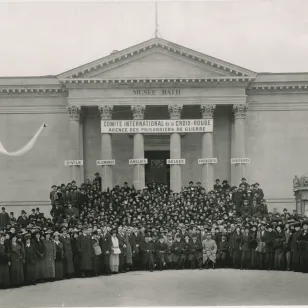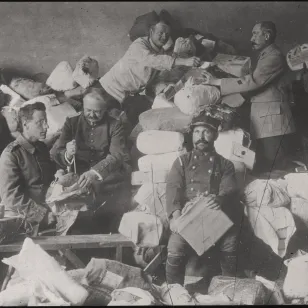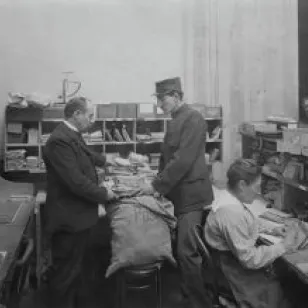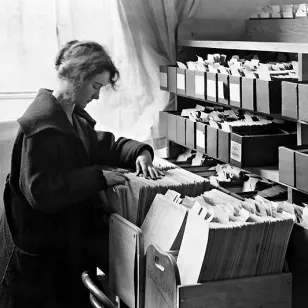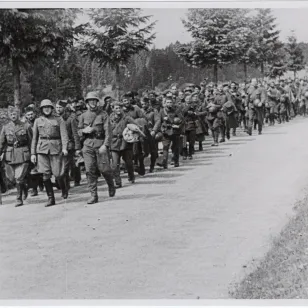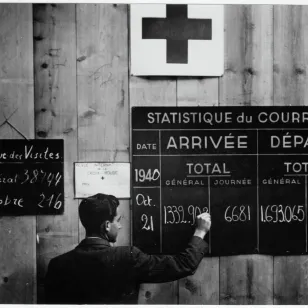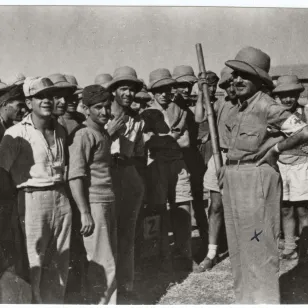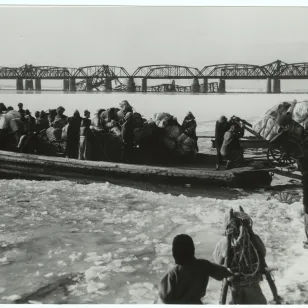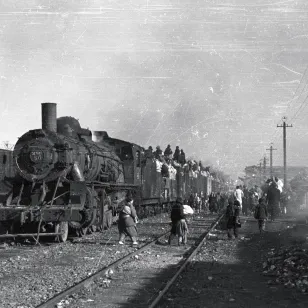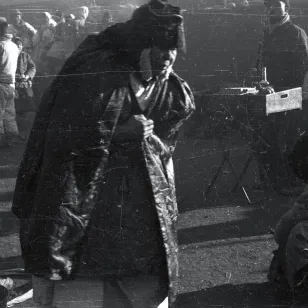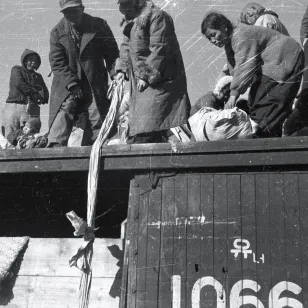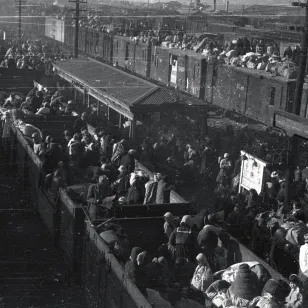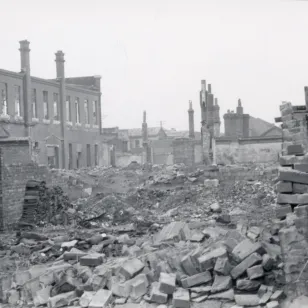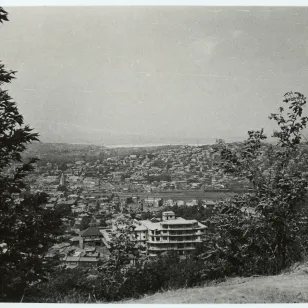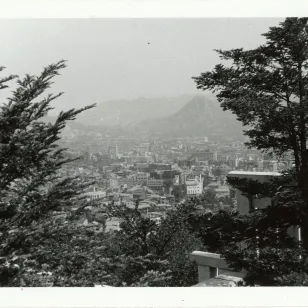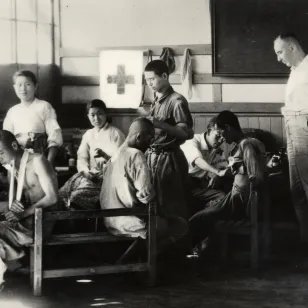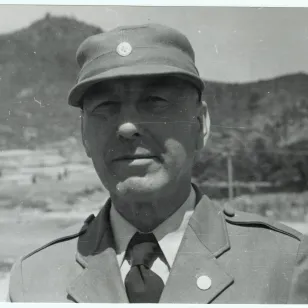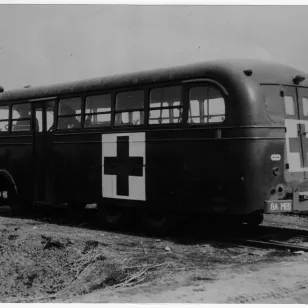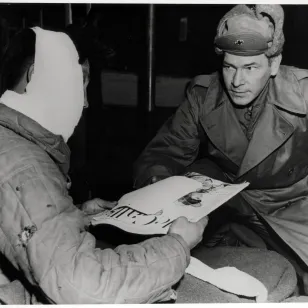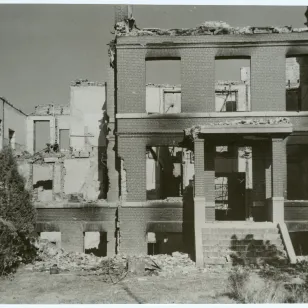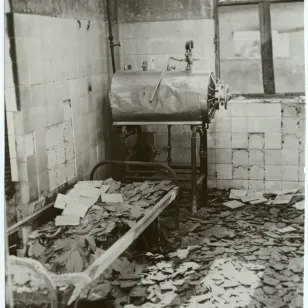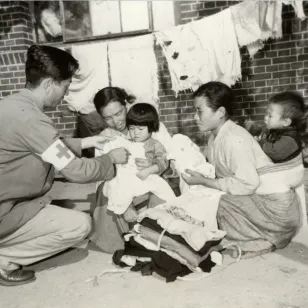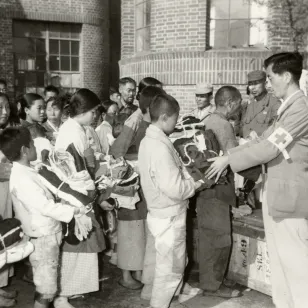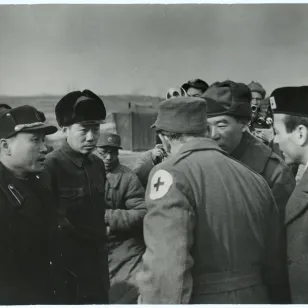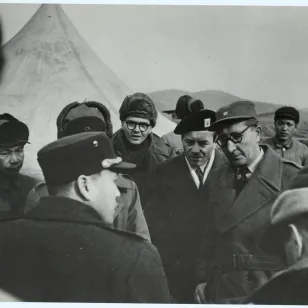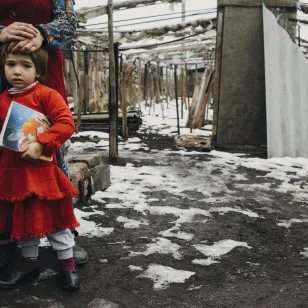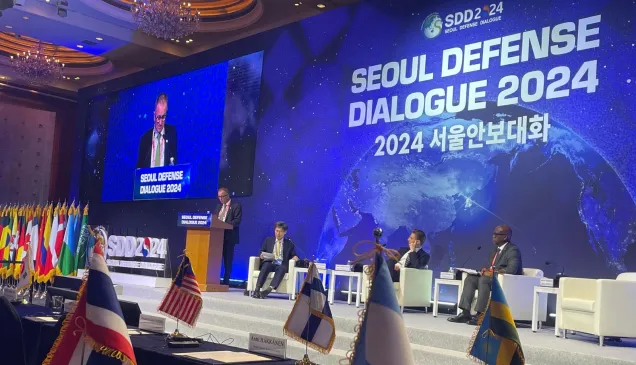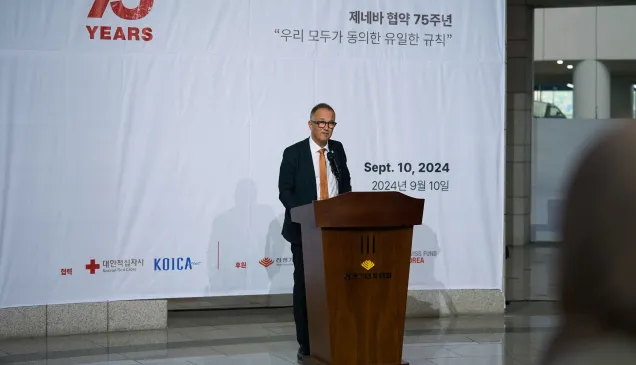Historical Timeline—ICRC, Geneva Conventions and the Republic of Korea
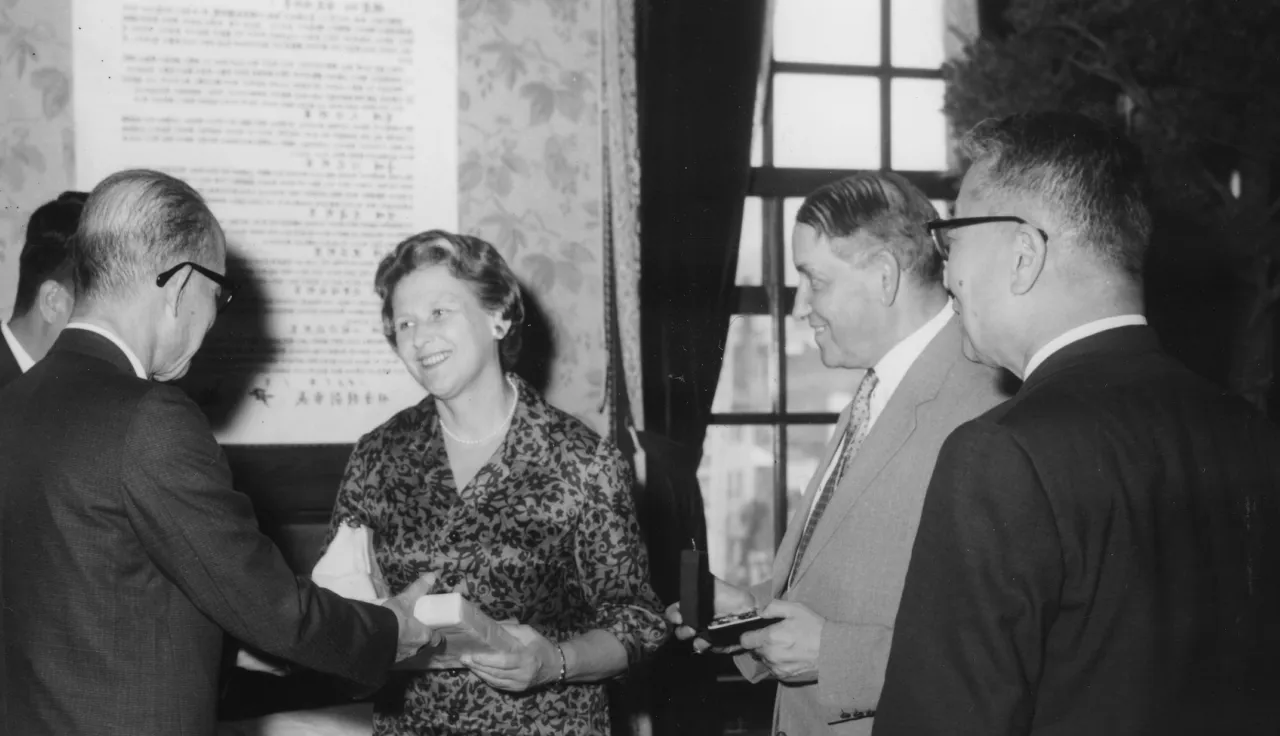
1859.6.24
Swiss businessman Henry Dunant takes part in rescue operations at the Battle of Solferino in Italy.
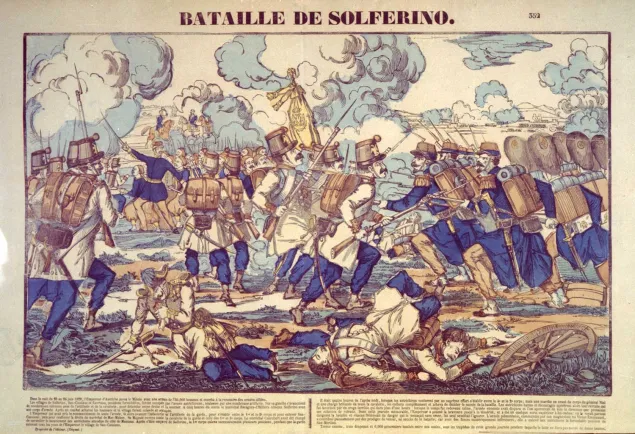

1862.10
Publication of A Memory of Solferino based on battlefield experiences organizing care for the wounded, which laid foundations for the Red Cross Movement.
1863.2.17
Dunant and four men founded what is today the International Committee of the Red Cross(ICRC).
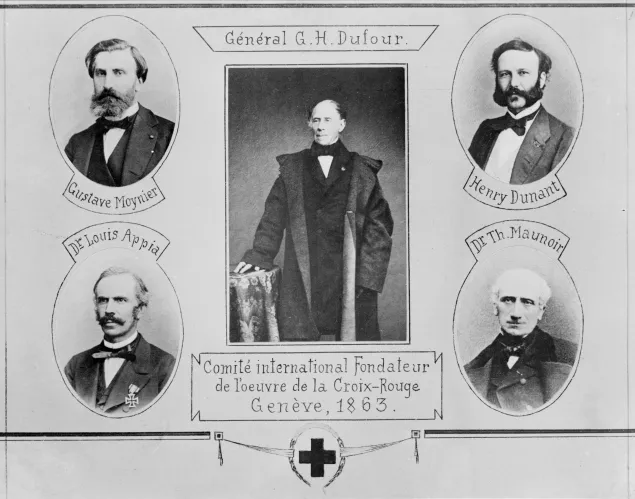
1864.8.22
First Geneva Convention adopted
Convention (I) for the Amelioration of the Condition of the Wounded and Sick in Armed Forces in the Field. Geneva, 12 August 1949
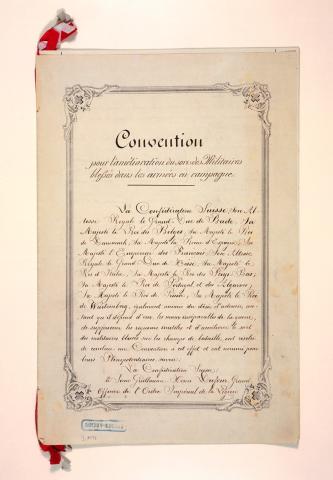
© Swiss Federal Archives/s.n., V-P-CH-E-01379
1875-1876
Uprisings against the Ottoman Empire spread throughout the Balkans, prompting the ICRC to send its first mission to the field.

1894.12
ICRC receives the first letter from Korea.
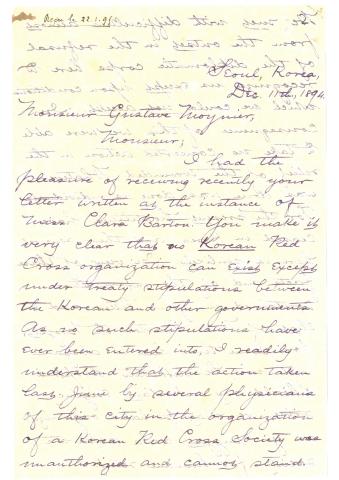
© ACICR, Geneva
1901
ICRC receives Nobel Peace Prize.
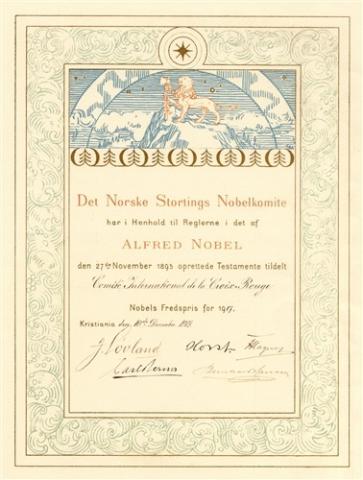
© ICRC/Varin, V-P-HIST-03537-01
1903
Accession of the Korean Empire to the Geneva Convention of 1864.
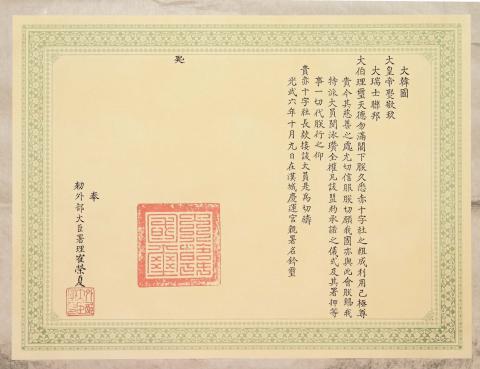
© Swiss Federal Archives SFA, provided by KNRC IHL Institute
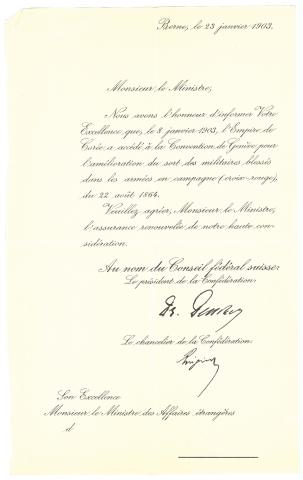
© ACICR, Geneva

© Gyujanggak, provided by KNRC IHL Institute
1905.10.27
Korean Red Cross established by Emperor Gojong
The Korean Empire Ordinance 47- Korean Red Cross Regulations was promulgated. However, in 1909, the Korean Red Cross was abolished by Ordinance 67 and forcibly merged with the Japanese Red Cross.

© Gyujanggak, provided by KNRC IHL Institute
1906.7.6
Second Geneva Convention adopted
Convention (II) for the Amelioration of the Condition of Wounded, Sick and Shipwrecked Members of Armed Forces at Sea
1914-1918
ICRC in action during World War I
During the First World War, the ICRC set up the International Prisoners of War Agency to centralize information about POWs and enable families to send them relief parcels. More than 3,000 people worked for this agency.
1929.7.27
Third Geneva Convention adopted
Convention (III) relative to the Treatment of Prisoners of War
1939-1945
ICRC in action during World War II
During the Second World War, the ICRC carried out immense humanitarian activities, particularly for POWs. As in the First World War, the ICRC opened a tracing agency to collect individual information on war victims and to help re-establish family ties between people separated by war.
1949.8.12
Four Geneva Conventions adopted
Convention (IV) relative to the Protection of Civilian Persons in Time of War
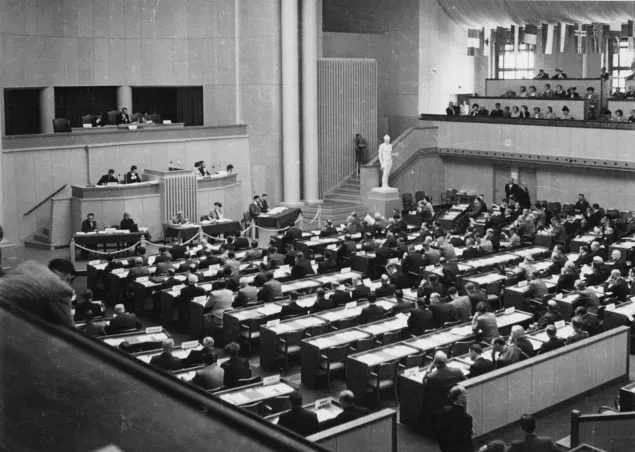
On 12 August 1949 the four Geneva Conventions for the protection of victims of war were adopted. These conventions protect wounded and sick soldiers (Convention I); shipwrecked soldiers (Convention II); prisoners of war (Convention III) and civilian populations in times of war (Convention IV).
1949.10.27
Republic of Korea National Red Cross (KNRC) officially reorganized after the liberation of Korea.
1950.6.25
Outbreak of the Korean War.
Seoul
Detainees, tied to each other, with their heads covered by a straw hat to prevent identification (11 December 1950)
Displaced citizens leaving Seoul by crossing the Han River (28 December 1950)
Abandoned Korean children (17 November 1950)
Daegu
Refugee Procession at Daegu Station on 29 December 1950. Despite the freezing weather, displaced citizens are seen climbing onto the roofs of freight cars.
Houses and streets destroyed after bombings (January 1952)
General view of the city, May 1952. 80% of the buildings are out of use.
1950.6.26
ICRC offers support to the governments of both the Republic of Korea (ROK) and the Democratic Republic of Korea (DPRK) a day after the outbreak of the Korean War
The day after the outbreak of the Korean War, ICRC President, Paul Ruegger, sent two identical telegrams to the governments of both the ROK and DPRK, offering the services of the ICRC and urging both parties to comply with the humanitarian principles enshrined in the Geneva Conventions.
The International Committee of Red Cross, founded in 1863, neutral and non-political institution composed exclusively of Swiss citizens and whose humanitarian intermediary is provided for in cases of international or civil war and internal disturbances, wishes to assure you [we are] at your disposal to accomplish [...] traditional tasks in existing situation in Korea […] In our opinion, the fact that Korea is not a party or signatory to these international agreements signed by sixty-one States should not prevent de facto application of humanitarian principles protecting war victims contained in said Conventions.
Telegrams dated 26 June 1950 from the ICRC to the ministers of foreign affairs of the ROK and DPRK, respectively.
ICRC Archives, B G 17 (172)
1950.7.3
In a symbolic gesture, ROK President Syngman Rhee publicly signed Article 3 common to the 1949 Geneva Conventions.
The 1949 Geneva Conventions took effect in October 1950, four months after the Korean War began. Nonetheless, the ICRC encouraged the parties involved to uphold the humanitarian principles contained in the Geneva Conventions, and the ROK government responded. Following the ICRC telegram, the ROK President Syngman Rhee publicly signed Article 3 common to the 1949 Conventions and announced that ROK forces would henceforth comply with the provisions of the 1949 Geneva Prisoner of War Convention. However, as signing a single article of the Geneva Conventions is not feasible, this act should be seen as purely symbolic. The ROK did not become a party to the Geneva Conventions until 1966.
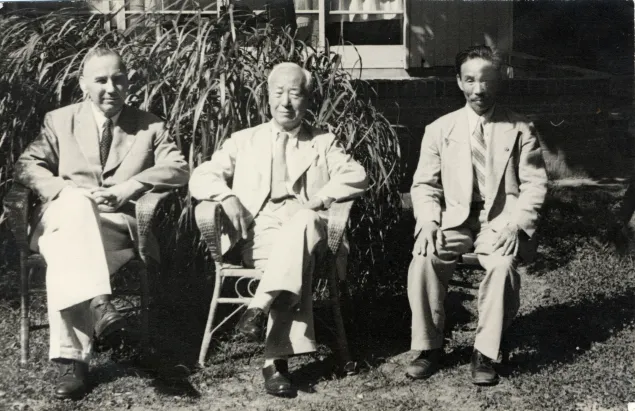
Portrait of Frederic Bieri, an ICRC delegate, Syngman Rhee, the President of the ROK, and Yung Tai Pyun, the President of the Korean Red Cross (10 August 1950)
1950-1953
ICRC mission during the Korean War
- POW “family links”
In accordance with the Geneva Convention on the treatment of prisoners of war, the ICRC operated the Central Agency for Prisoners of War, disseminating information on detainees. By September 14 1950, it had received information on approximately 51 North Korean prisoners of war and about 110 UN prisoners of war, which it then conveyed to each side. - Treatment of wounded, sick, POW and civilian internees
ICRC visited and conducted inspections on military hospitals, POW camps and civilian internment camps over 160 timesㅡdelivering relief items and advocating for better treatment of the POWs. ICRC Audiovisual Archives hold photographs and documents on their visits to various camps in Seoul, Incheon, Daegu, Busan, Geoje, Yeongcheon, and Hamhung. - Civilian assistance despite limitation
All aid to civilians in South Korea during most of the Korean War had to go through the United Nations Civil Assistance Command for Korea (UNCACK). ICRC delivered about 65,000 Swiss francs worth of medical supplies to UNCACK and made sure through visits that these supplies had reached and were being used to treat detainees in prisons.
After intense negotiations, ICRC could launch a small relief operation directly to the civilian population in South Korea in 1953. As a result, ICRC delivered about 15,000 Swiss francs worth of medical supplies to civilians and worked with KNRC to deliver about 300 braille watches to visually-impaired.
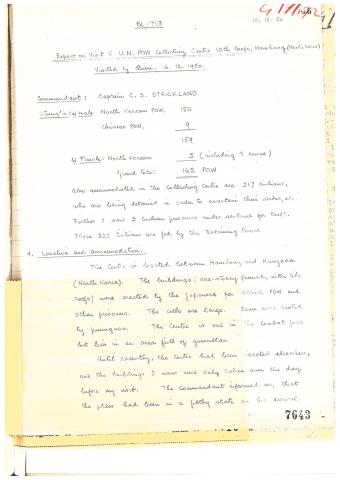
© ACICR, Geneva
Daegu, POW Camp No. 100. An ICRC delegate Frédéric Bieri with the injured in the infirmary established by the ICRC (26 July 1950)
Busan, Camp EUSAK No. 1. An ICRC delegate Frédéric Bieri in conversation with a young prisoner of war (29 July 1950)
Geoje. An ICRC delegate Frédéric Bieri visits Geoje POW Camp (June 1951)
An ICRC delegate, Frédéric Bieri meets young POW doing laundry at Geoje POW Camp.
Between Cheonan and Jochiwon. ICRC's medical operating unit for lightly wounded (27 January 1951)
Near Chuncheon. The assistant director of the Red Cross of the U.S. IX Corps distributes Red Cross gifts in a Korean hospital (2 March 1952)
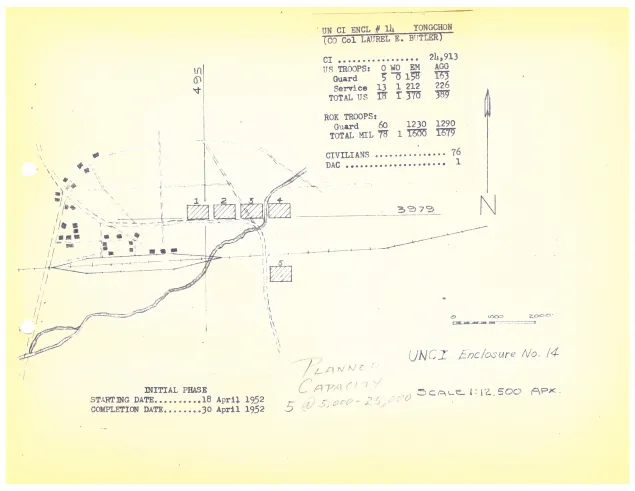
A map of a POW camp in Yongchon, 1952, indicating the number of civilian internees, total military troops (both ROK and UN), and civilians.
1950-1953
KNRC mission during the Korean War
The Seoul Red Cross Hospital was partially destroyed during the street battle on August 27, 1950.
Red Cross workers providing clothing to war refugees (2 November 1950)
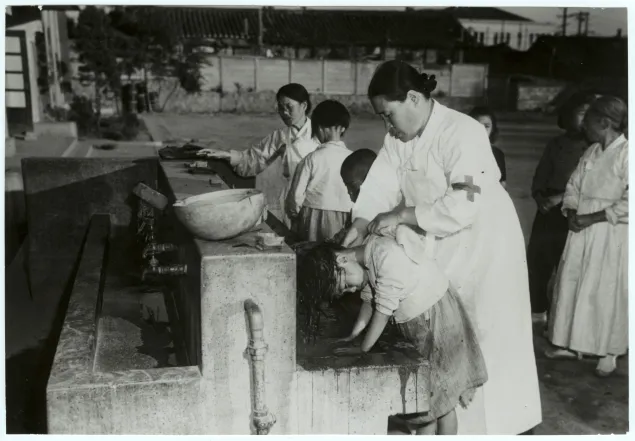
Korean children taken in at a new UN orphanage (2 November 1950)
1952.7-8
The 18th International Red Cross Conference held in Toronto, Canada
The conference, held during the Korean War, adopted several resolutions on prisoners of war and civilians with the ROK’s representatives attending under the direction of President Syngman Rhee.
1953.4-5
Operation Little Switch–Repatriation of sick and wounded POWs
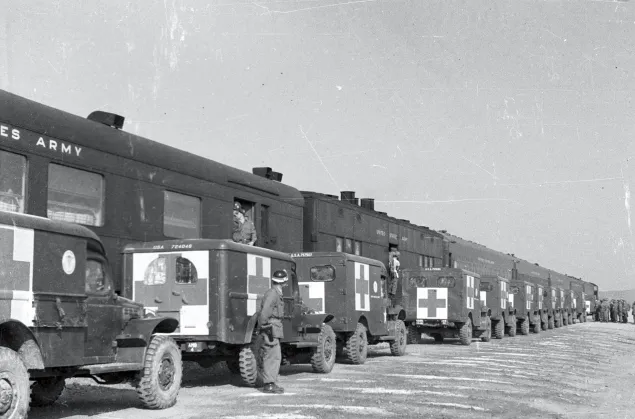
Trains and ambulances awaiting POW exchange in Munsan.
Ambulances at the exchange of prisoners of war in Munsan, Gyeonggi-do in May 1953. The exchange of prisoners of war between the two sides, prioritizing the sick and the wounded, took place from 20 April to 2 May 1953.
1953.7.27
The Korean Armistice Agreement signed
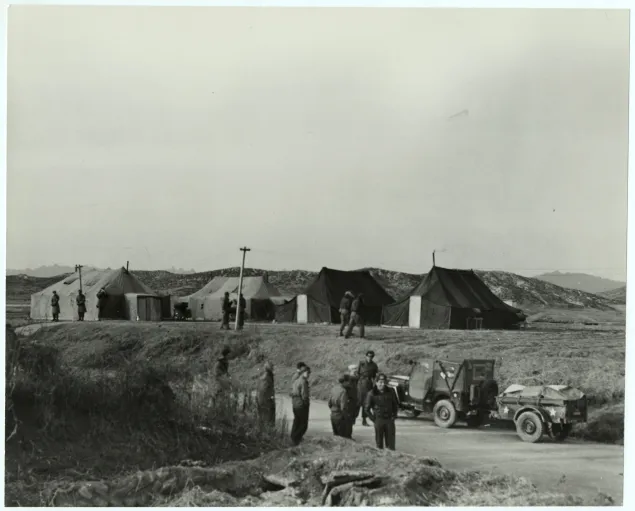
Armistice negotiations at Panmunjom. Arrival of a jeep loaded with medical supplies for prisoners of war held by North Korean forces (16 January 1952)
Panmunjom, DPRK. 17 January 1952. ICRC delegates confer with the Major General and other representatives of the North Korean armed forces regarding armistice negotiations
1955
KNRC receives accreditation from ICRC.
1964-1980s
The Vietnam War and the Genocide in Cambodia
Although after 1980, the ICRC was able to assist refugee populations in South-East Asia, its activities during the Vietnam War were difficult on both sides. In Cambodia, the ICRC was not able to carry out its activities until after the fall of the Khmer Rouge in 1979.
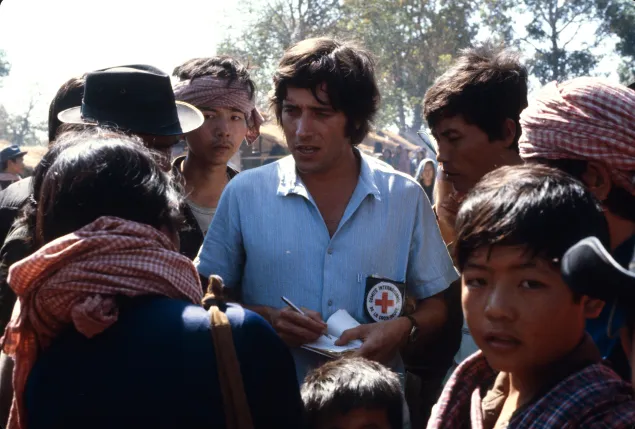
Nong Chan, Khmer refugee camp. Investigation on the field for family reunion.
1965.6
ICRC President Samuel Gonard visits the ROK
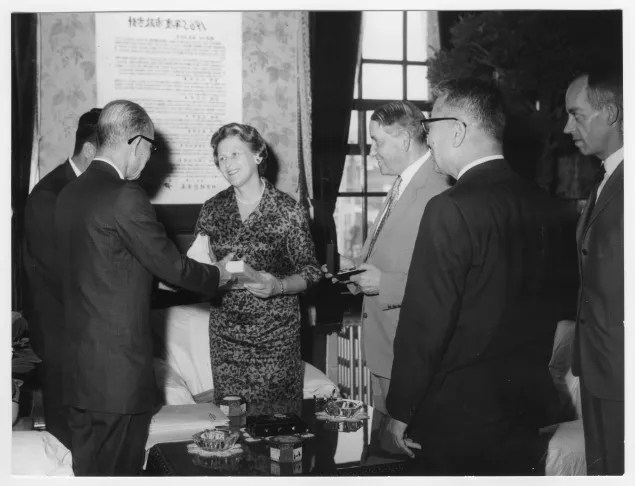
Samuel Gonard, the President of the ICRC, visited the ROK as part of a series of visits to the national Red Cross headquarters in Pakistan, India, Thailand, the Philippines, Japan, the ROK, Mexico, and the United States.
1966.8.16
Accession of the ROK to the four Geneva Conventions of 1949
The ROK could not formally sign the 1949 Geneva Conventions during the Korean War but signed on 16 August 1966, becoming the 116th contracting party to the Geneva Conventions.
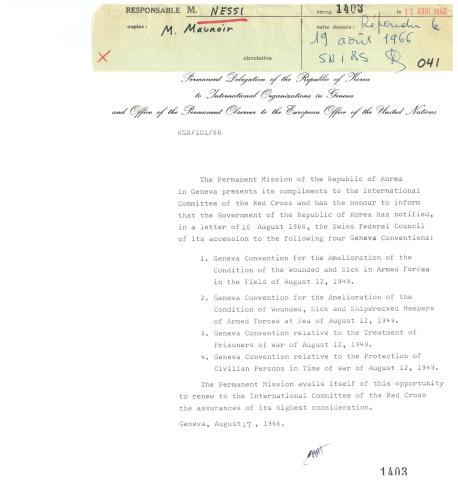
© ACICR, Geneva
1969-1970
ICRC supports repatriation efforts of passengers of the Korean Air Lines YS-11 hijacking incident
1977
Additional Protocol I to the Geneva Conventions
Protocol Additional to the Geneva Conventions of 12 August 1949, and relating to the Protection of Victims of International Armed Conflicts (Protocol I), 8 June 1977
Additional Protocol II to the Geneva Conventions
Protocol Additional to the Geneva Conventions of 12 August 1949, and relating to the Protection of Victims of Non-International Armed Conflicts (Protocol II), 8 June 1977
1980-1988
The Iran-Iraq War and ICRC activities
During the bloody conflict between Iraq and Iran, the ICRC carried out activities on behalf of prisoners of war on both sides.
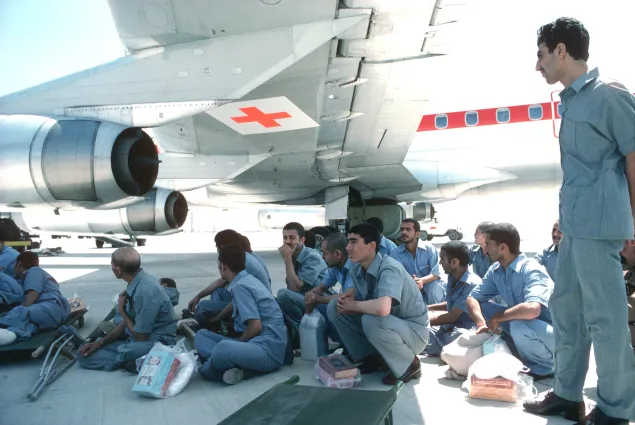
Iran-Iraq conflict. Larnaca airport. ICRC operation to repatriate the seriously wounded prisoners of war. Waiting at the shadow of the plane, Iranian prisoners of war are waiting for their depature to Teheran.
History of communication devices ICRC used
At the heart of the ICRC's humanitarian actions has always been technology. The history of communication devices ICRC used in the past ㅡ which were cutting-edge at the time ㅡ provides glimpses into the efforts the ICRC has made to assist people going through the worst times of their lives. Even in today's rapidly-changing conflict settings, the ICRC collaborates with various innovative and advanced technology institutions to extend a helping hand to those in need.
Talkie-Walkie
© ICRC
Brother typewriter
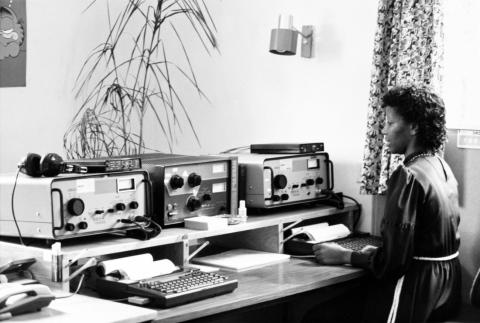
©ICRC
Transceiver HF - Transworld PRC 1099
©ICRC
1985
First reunion of families separated by the Korean War takes place ㅡ13 years after Republic of Korea National Red Cross (KNRC) and DPR Korea Red Cross Society (DPRK RCS) held first talks on separated families in 1972.
The Korean War resulted in approximately 10 million people separated from their families. Starting after 1985, through a total of 21 family reunion events, 7 video reunions and letter exchanges, approximately 8,262 families, comprising 59,563 individuals from both Koreas, were able to confirm the survival of their family members. Many, however, have passed away since then, and according to data from the Ministry of Unification, the current number of surviving separated family members in the ROK is around 38,000 (as of June 2024).
1989
30 Years of Presence in Afghanistan
The ICRC has had a permanent presence in Afghanistan for over three decades. In particular, it has been developing orthopedic activities for victims of mines and unexploded ordnance.
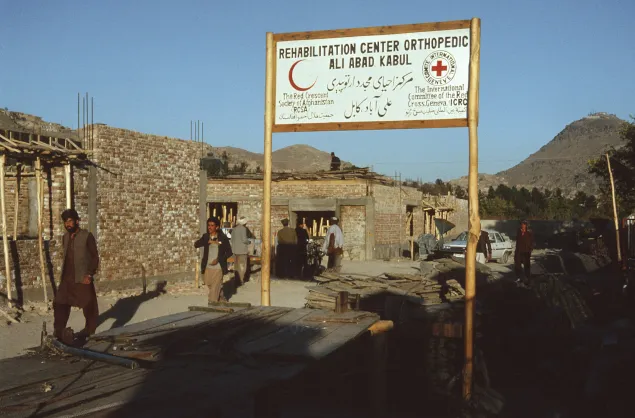
Kabul. Building site of the new ICRC orthopeadic centre.
2001.9.11
September 11 Attacks
The so-called “war on terror” declared after the attacks that struck New York on 11 September, and the military operations in Afghanistan and Iraq, raised a number of new challenges for the ICRC.

Ghor province, Barakhan. Waiting for an ICRC food and seed distribution.
2002
ICRC opens mission in the DPRK.
The focus of ICRC activities in the DPRK is physical rehabilitation, health, water supply and sanitation, remnant weapon contamination related to the Korean War, among others.

Sariwon, South Hwanghae Provincial Hospital. ICRC and hospital surgeons examine the fractured hand of a patient in the orthopedic war (6 July 2013).
2005
Additional Protocol III to the Geneva Conventions
Protocol additional to the Geneva Conventions of 12 August 1949, and relating to the Adoption of an Additional Distinctive Emblem (Protocol III), 8 December 2005
2010-2011
The Arab World in Crisis
The events of the so-called "Arab Spring" that swept through several countries in North Africa and the Middle East had huge humanitarian consequences, requiring ICRC’s humanitarian response in many countries.

Benghazi, harbour. A family is reunited. People separated from their families by the conflict were brought from Tripoli to Benghazi by an ICRC-chartered vessel.
2013.8.25-27
ICRC President Peter Maurer visits ROK and DPRK
Peter Maurer's visit to Korea facilitated discussions on humanitarian issues on the Korean peninsula and the cooperative relationship between ICRC and the Korean peninsula.
2015
Establishment of ICRC Mission in ROK
ICRC Mission in the ROK focuses on raising the Korean public’s awareness of global humanitarian crises, promotes the understanding and respect of International Humanitarian Law(IHL) working closely with the government, lawmakers, the military, academia, civil society, and the KNRC, among others.
2019
Responding to Pandemic
As a result of the outbreak of the coronavirus and its global spread, the ICRC provided assistance to fragile health systems, particularly in conflict zones.
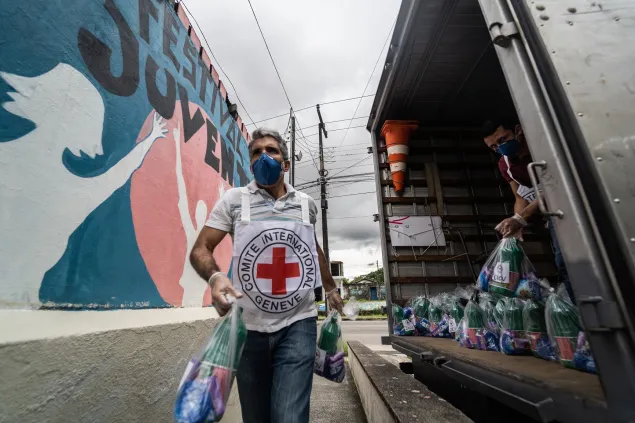
Ceará, Fortaleza. In an effort to fight the COVID-19 pandemic, ICRC assists violence-affected communities by donating hygiene kits to a local partner who will oversee the distribution. In addition, a cash transfer program was implemented.
2022
The Russia-Ukraine War
The Russia-Ukraine conflict mobilizes the ICRC in all its traditional fields of activity, whether in favor of civilian victims or prisoners of war.
2023.10
Conflict in Gaza
Since the onset of the ongoing conflict between Gaza and Israel, the ICRC has been relentlessly reminding the parties to the conflict to respect International Humanitarian Law and providing humanitarian services to the affected population. At multiple times, it has acted as a neutral intermediary for the release of the Israeli hostages and palestinian detainees. The ICRC is also running a surgical field hospital and supporting the existing hospitals to treat the wounded and sick.
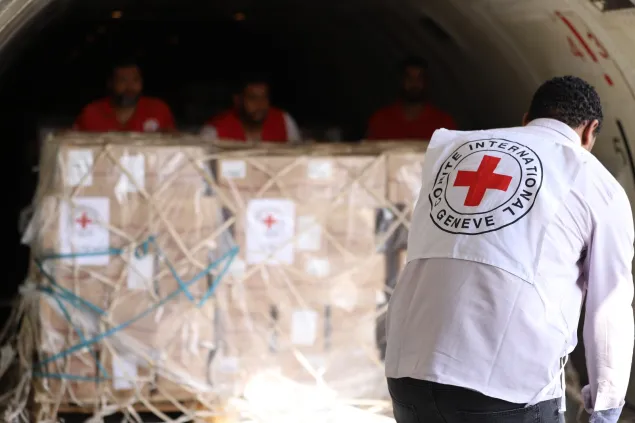
Ahmed Mostafa, logistical coordinator of the ICRC Cairo delegation Aid Convoy in Areesh to Rafah
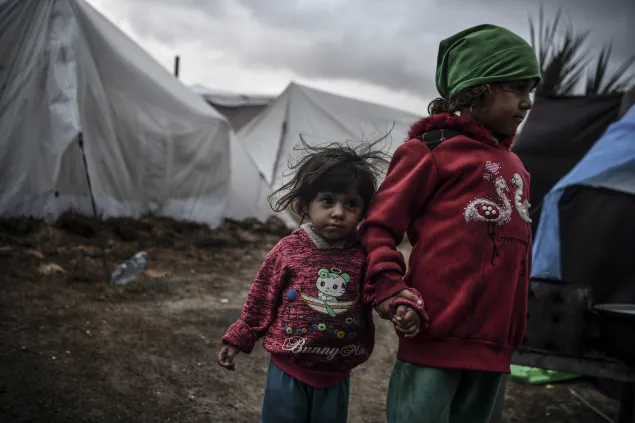
Gaza. Two sisters fleeing conflict escalation, wandering through a makeshift camp amidst city rubble.
2024
Geneva Conventions 75th Anniversary
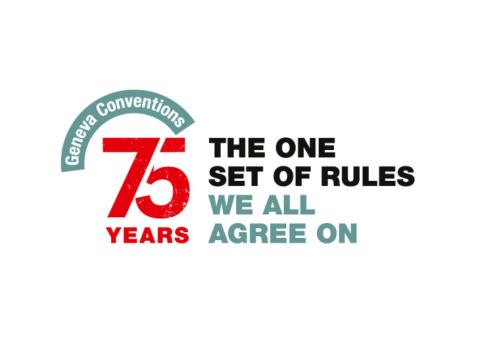
Commemorating the 75th Anniversary of the Geneva Conventions, various ICRC events are being held across the globe. Many are designed to deliberate on the Geneva Conventions’ relevance to contemporary armed conflicts and humanitarian challenges. Today, the ICRC is the world’s oldest and largest international humanitarian organization still active. About 19,000 ICRC staff members are working in over 100 countries around the world.

